
Roots
To journey into the heart of textured hair is to listen to the whispers of forgotten winds, to trace the ancient currents of knowledge that flowed through generations. It is an invitation to feel the pulse of ancestral wisdom, often etched into the very patterns of our strands, shaping not just how we adorn our crowns, but how we shield them. When we ask what ancestral practices truly shaped protective styling techniques for textured hair, we are not simply seeking historical facts; we are seeking a lineage of care, a testament to resilience, and a profound connection to collective memory. This exploration calls us to look beyond the superficial, to see each coil, each twist, each braid, as a living archive, holding secrets of survival and celebration passed down through time.
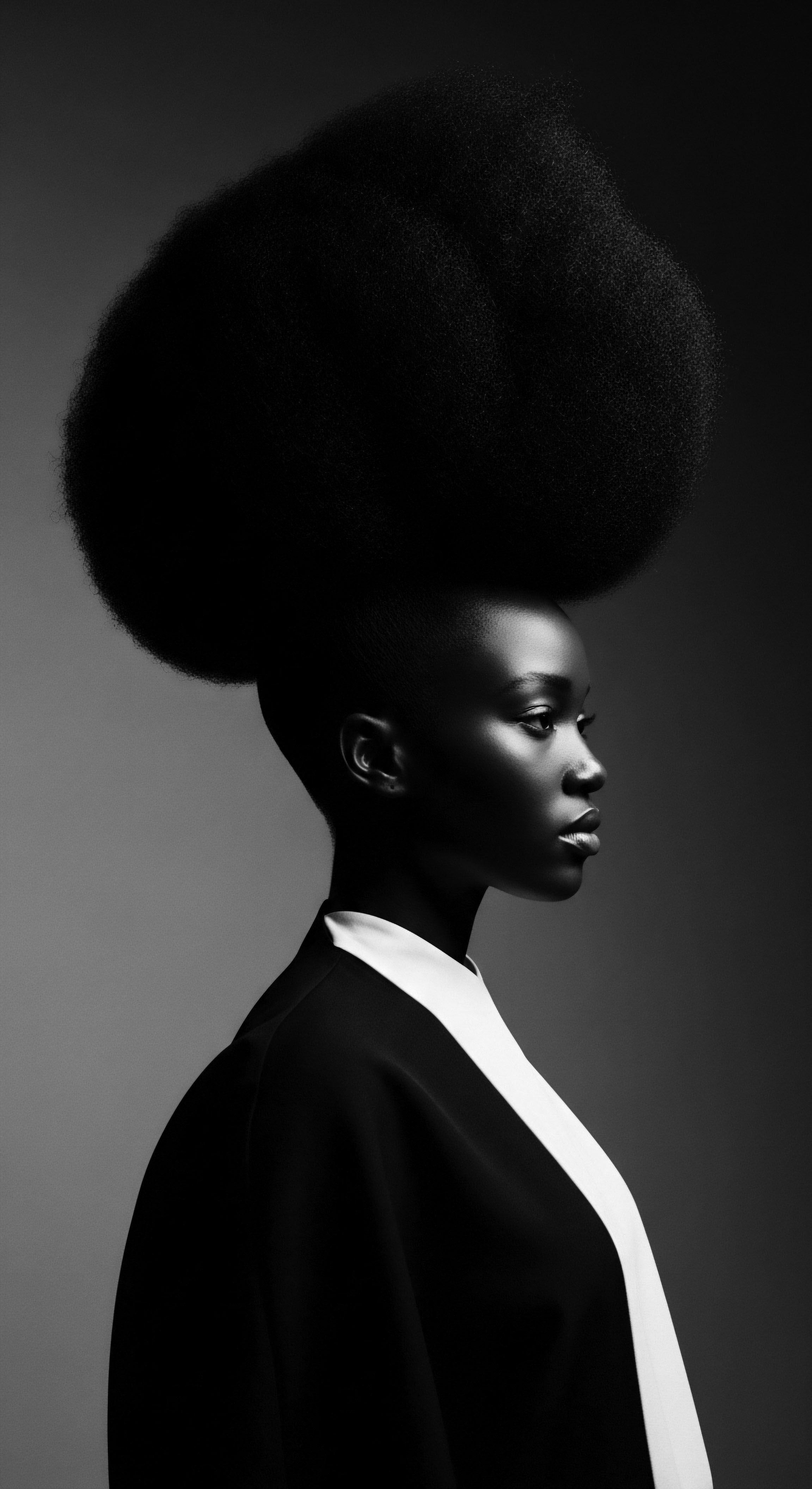
The Architecture of the Coil
The distinct morphology of textured hair, whether it be tightly coiled, springy, or wavy, carries a unique architectural blueprint. This structure, often elliptical in cross-section with an uneven distribution of keratin, dictates its behavior—its remarkable elasticity, its susceptibility to dryness, and its inclination to shrink. Understanding this fundamental biology is key to appreciating why protective methods became not just cosmetic choices, but fundamental practices for the vitality of the hair itself. From the earliest days, those who understood these characteristics implicitly recognized the need for gentle handling and safeguarding.
Consider the Hair Cuticle, the outermost layer. In textured hair, these scales tend to be more raised, creating more friction between individual strands. This inherent characteristic means textured hair is more prone to tangling and breakage compared to straighter hair types.
Ancestral caretakers intuitively compensated for this fragility, developing methods that minimized manipulation, kept strands aligned, and shielded them from environmental stressors. These were not just styling choices; they were intelligent responses to the hair’s very nature, born of observation and generational experience.

Echoes in Classification
While modern classification systems attempt to categorize textured hair into numerical and alphabetical types, the deeper, more resonant classifications often reside in cultural context and traditional understanding. Ancestral communities did not define hair by numbers, but by its symbolic meanings, its growth patterns, and its reaction to natural elements. They recognized the diverse expressions of textured hair within their populations, each possessing its own particular needs and vulnerabilities.
The language used to describe hair in traditional settings often reflects its inherent properties and the care it requires. Terms for hair might describe its texture, its length, its health, or its spiritual significance. These linguistic echoes suggest an understanding that predates contemporary scientific jargon, offering a profound appreciation for hair as a living, dynamic part of the body and spirit. This wisdom was transmitted through observation, through touch, through ritual, establishing a living lexicon of care.
Ancestral hair practices were intuitive responses to the inherent fragility and unique architectural blueprint of textured hair, ensuring its vitality and resilience.
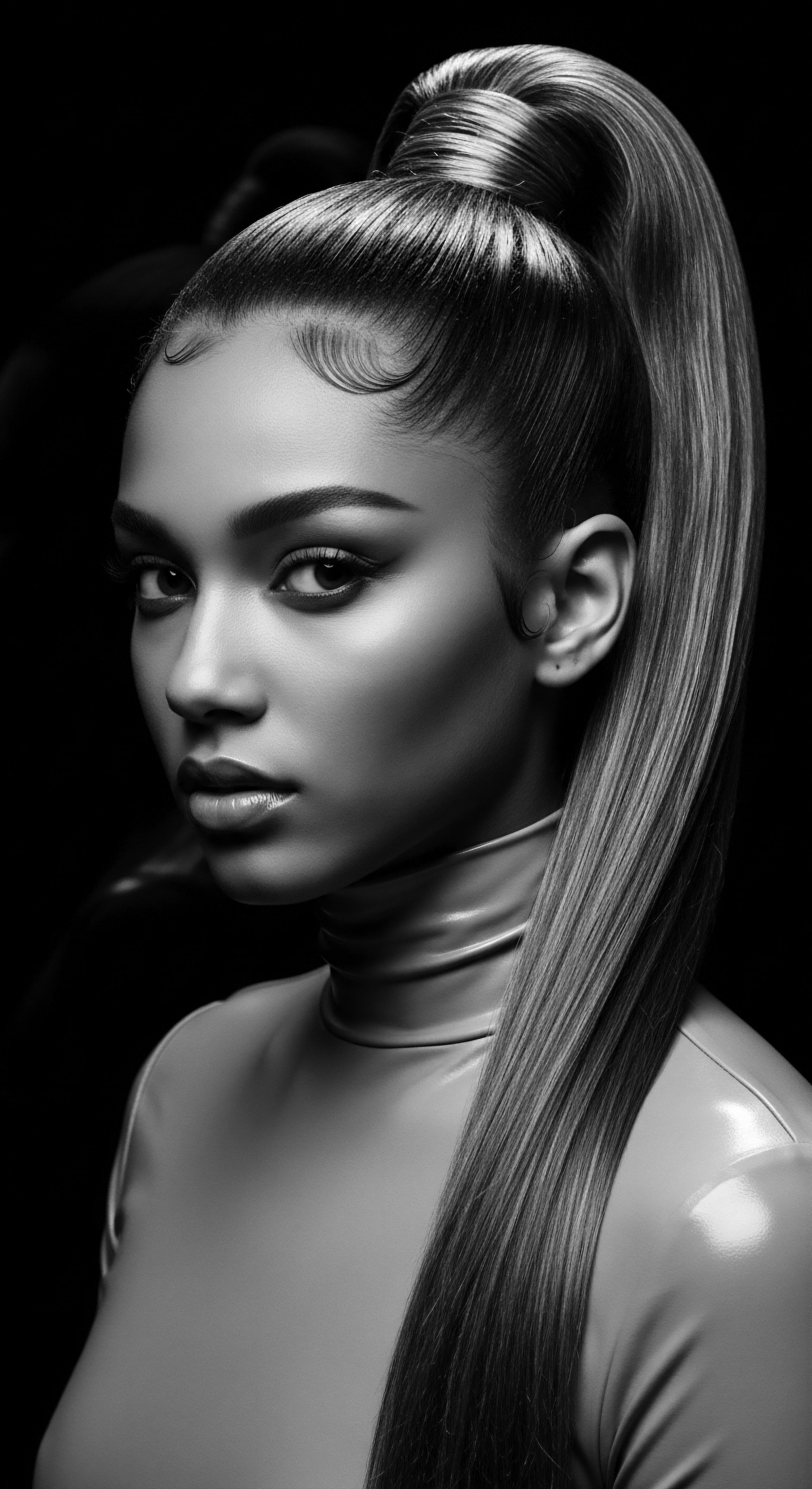
The Ancient Lexicon of Care
Before chemical relaxers and heat tools, protective styling was simply a way of life for those with textured hair. The term ‘protective style’ itself, as we understand it today, is a modern framing of practices that have spanned millennia. These techniques were not mere aesthetic choices; they were foundational to the preservation of hair health and length, serving as a shield against harsh climates, daily wear, and rigorous activities. The practices included intricate braiding patterns, twisted coils, and carefully wrapped styles designed to minimize manipulation, lock in moisture, and guard delicate ends.
Within various African societies, hair was a powerful marker of identity, status, spirituality, and age. The way hair was styled could convey marital status, tribal affiliation, readiness for war, or even spiritual connection. These styles, often elaborate and requiring hours of communal effort, were inherently protective.
The gathering of hair into compact, organized forms reduced exposure and friction, thus preserving its structural integrity. The use of natural emollients and herbs, massaged into the scalp and strands before or during styling, provided internal nourishment and external barriers against environmental damage.
Consider the Himba people of Namibia, whose distinctive ‘otjize’ Paste applied to their hair and skin speaks volumes about ancestral protective practices. This rich, reddish-brown mixture of butterfat, ochre pigment, and aromatic resins is not merely cosmetic. It serves as a natural sunscreen, shielding their hair and skin from the scorching desert sun and dry winds (Namwandi, 2011).
This practice illustrates a profound understanding of environmental protection and aesthetic expression converging in a deeply ancestral ritual. The weight and consistency of the otjize paste also helps to keep the hair, often styled in long dreadlocked formations known as ‘himbalocks,’ compacted and protected from tangling and breakage, a practical solution born of generations living in arid conditions.
The cyclical nature of hair growth was also understood through ancestral observation. While they may not have used terms like ‘anagen’ or ‘telogen,’ traditional caretakers recognized periods of growth, rest, and shedding. Their styling cycles, often tied to lunar phases or seasonal changes, intuitively supported these natural rhythms. Styles were refreshed, new growth was incorporated, and hair was given periods of rest from tension, all aligning with the hair’s intrinsic life cycle.
- Cornrows ❉ An ancient braiding technique, often dating back thousands of years in various African cultures, where hair is braided very close to the scalp in continuous, raised rows. This method protects the entire length of the hair by keeping it tucked away and minimizing manipulation.
- Bantu Knots ❉ Small, coiled buns formed by twisting sections of hair until they coil upon themselves. These are seen across African traditions and are excellent for holding moisture and protecting ends, allowing the hair to dry without external damage.
- Twists ❉ Two-strand twists, a simple yet effective method of coiling two sections of hair around each other, reducing tangles and preserving length. Found in diverse forms across the continent.

Ritual
The journey through textured hair heritage moves beyond foundational understanding, delving into the very heart of how these ancient insights manifested as daily and ceremonial rituals. Protective styling, at its core, is a ritual—a deliberate act of care, connection, and preservation. These practices, honed over centuries, represent a living legacy of ingenuity and artistic expression, offering not just physical protection but also cultural anchors. They tell stories of community bonds, spiritual reverence, and the profound significance of hair in Black and mixed-race experiences.

Braiding as a Communal Rite
Across countless African societies, hair styling, especially braiding, was a deeply communal activity. It was rarely a solitary task but a shared experience, often conducted under a tree, in courtyards, or within the intimate spaces of family compounds. This communal aspect served many purposes. It was a space for storytelling, for transmitting oral histories, for sharing wisdom about hair care, and for strengthening intergenerational bonds.
The older women, often the most skilled practitioners, passed down techniques and knowledge to younger generations, ensuring the continuity of these traditions. This hands-on teaching ensured not only the physical execution of complex styles but also the cultural meaning imbued within each braid.
The length of time often required for intricate protective styles—sometimes spanning hours or even days—further solidified their communal significance. It was an investment of time and collective energy, fostering patience and connection. The very act of having one’s hair styled by another, of sitting still and allowing hands to work magic, built trust and intimacy. These were not just aesthetic transformations; they were moments of shared humanity, of reciprocal care, and of cultural affirmation.

The Power of Adornment and Symbolism
Protective styles were often adorned with natural elements, adding another layer of meaning and aesthetic appeal. Cowrie shells, beads crafted from seeds or clay, gold, silver, and even intricate thread wrapping were used to beautify and symbolize. Each adornment could convey specific messages ❉ wealth, spiritual beliefs, marital status, or tribal identity.
For instance, in some West African cultures, specific bead placements or colors in braided styles could signify a woman’s readiness for marriage or her family’s status. These embellishments, while decorative, often also served practical purposes, adding weight to braids to help them hang, or securing intricate patterns.
The very act of adorning these protective styles transformed them into works of art, reflecting the aesthetic sensibilities of the community. This artistry, coupled with the functional aspect of protection, speaks to a holistic view of beauty—one that recognized the interconnectedness of appearance, health, and cultural expression. The styles were not merely ‘worn’; they were statements, narratives, and reflections of a collective identity.
Protective styling transcends mere aesthetics, serving as a profound ritual that fosters community, preserves cultural narratives, and honors the hair’s inherent symbolism.
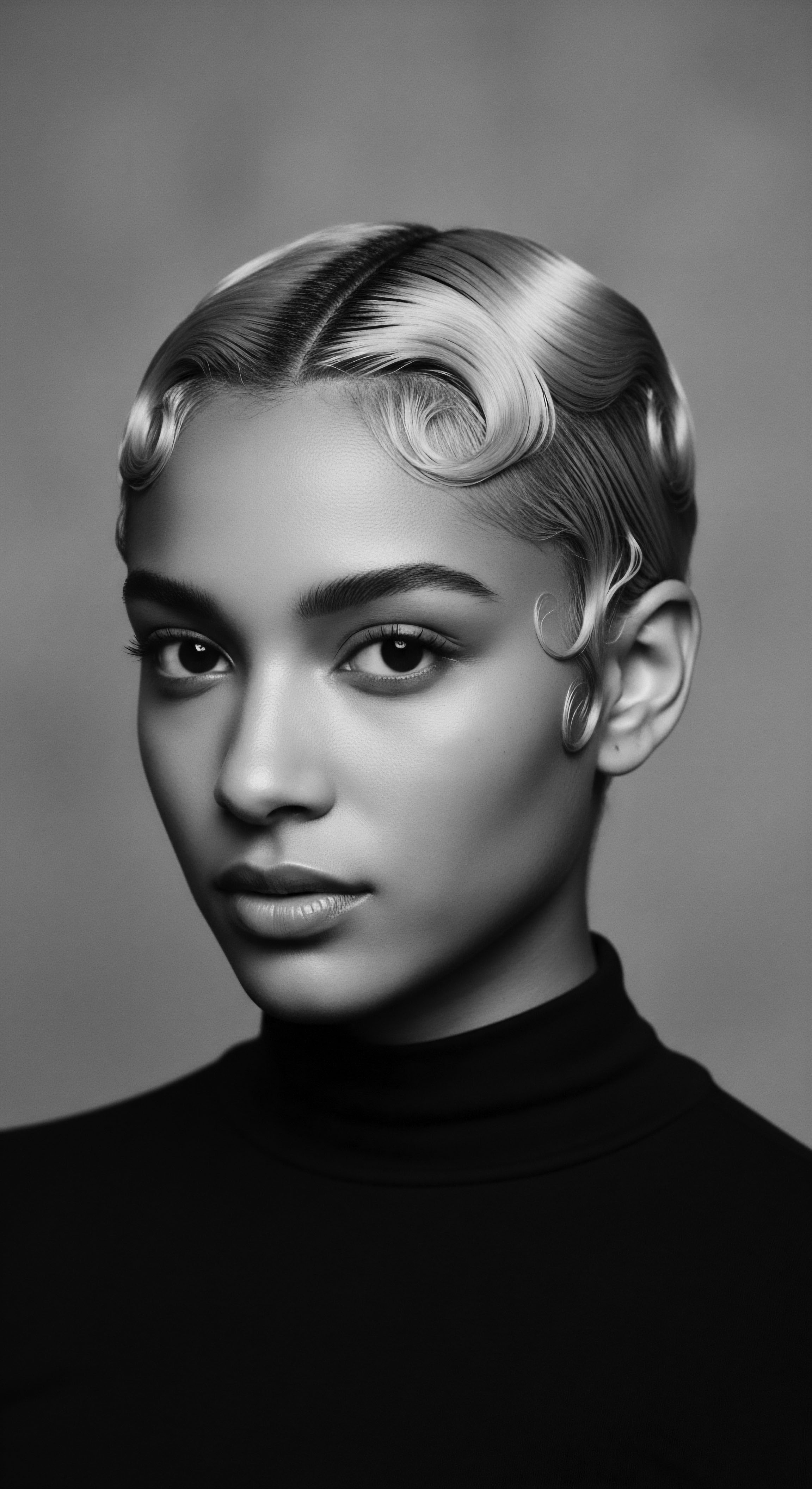
Herbal Lore and Natural Nourishment
Ancestral practices for protective styling were deeply intertwined with a profound understanding of local flora and natural resources. Before the advent of synthetic products, communities relied on what the earth provided to cleanse, condition, and protect their hair. This intimate knowledge of botanicals informed the efficacy of protective styles.
For example, the use of various plant-based oils and butters, such as Shea Butter (from the shea tree, Vitellaria paradoxa, prevalent in West Africa) or Palm Oil, provided natural emollients to seal in moisture, reduce friction, and add suppleness to the strands. These ingredients were often warmed and massaged into the scalp and hair, promoting blood circulation and nourishing the hair follicle, laying a healthy foundation for any protective style.
Certain herbs were also known for their cleansing or strengthening properties. For instance, the use of certain plant ashes or clay for cleansing, followed by herbal infusions for conditioning, was not uncommon. These natural preparations, often rich in vitamins, minerals, and antioxidants, would coat the hair shaft, acting as a protective barrier and helping to maintain the integrity of the hair under tension from braids or twists. The ancestral knowledge of these natural remedies is a testament to sophisticated, indigenous pharmacology applied directly to hair health and protective care.
| Ancestral Ingredient/Practice Shea Butter (Vitellaria paradoxa) |
| Traditional Use in Protective Styling Used as a sealant and moisturizer; massaged into scalp and hair before braiding to soften strands and protect from dryness. |
| Modern Connection/Benefit Rich in fatty acids and vitamins A, E, F. Widely used in contemporary natural hair products for moisture retention and anti-breakage properties. |
| Ancestral Ingredient/Practice Aloe Vera (various species) |
| Traditional Use in Protective Styling Applied directly to scalp for soothing irritation; used as a conditioning agent for hair strength and shine. |
| Modern Connection/Benefit Known for its proteolytic enzymes that repair dead skin cells on the scalp; acts as a great conditioner, promoting healthy hair growth. |
| Ancestral Ingredient/Practice Clay (e.g. Bentonite, Kaolin) |
| Traditional Use in Protective Styling Used for cleansing the scalp and hair; drawing out impurities without stripping natural oils. |
| Modern Connection/Benefit Popular in modern hair masks for detoxification and gentle cleansing, often mixed with apple cider vinegar for pH balance. |
| Ancestral Ingredient/Practice Herbal Rinses/Infusions (e.g. hibiscus, rosemary) |
| Traditional Use in Protective Styling Used to strengthen hair, stimulate growth, and add shine; often applied as a final rinse after cleansing. |
| Modern Connection/Benefit Scientific studies support the antioxidant and circulatory benefits of many herbs for scalp health and hair follicle stimulation. |
| Ancestral Ingredient/Practice These ancestral ingredients demonstrate a deep, practical understanding of natural hair care, still pertinent in today's regimens. |

The Nighttime Sanctuary ❉ Preserving the Style
The wisdom of protective styling extends beyond the daytime aesthetic into the crucial realm of nighttime care. Ancestral communities understood that unfettered hair, especially while sleeping, could lead to tangling, breakage, and the undoing of meticulously crafted styles. While the modern satin bonnet or silk scarf might seem like a contemporary invention, the practice of covering and securing hair at night has deep roots.
Traditional headwraps, often made from natural fibers like cotton or finely woven cloths, served a similar purpose. They kept hair compressed and protected, minimizing friction against rough sleeping surfaces and preserving the integrity of protective styles like braids and twists.
This nocturnal ritual underscores a consistent, holistic approach to hair preservation. It acknowledges that protection is not a singular event but an ongoing commitment. By safeguarding styles during sleep, these practices extended the life of the styles, reduced daily manipulation, and maintained the hair’s moisture levels, all of which contributed significantly to length retention and overall hair health. The simplicity of these coverings belies their profound impact on hair longevity and the preservation of protective techniques.
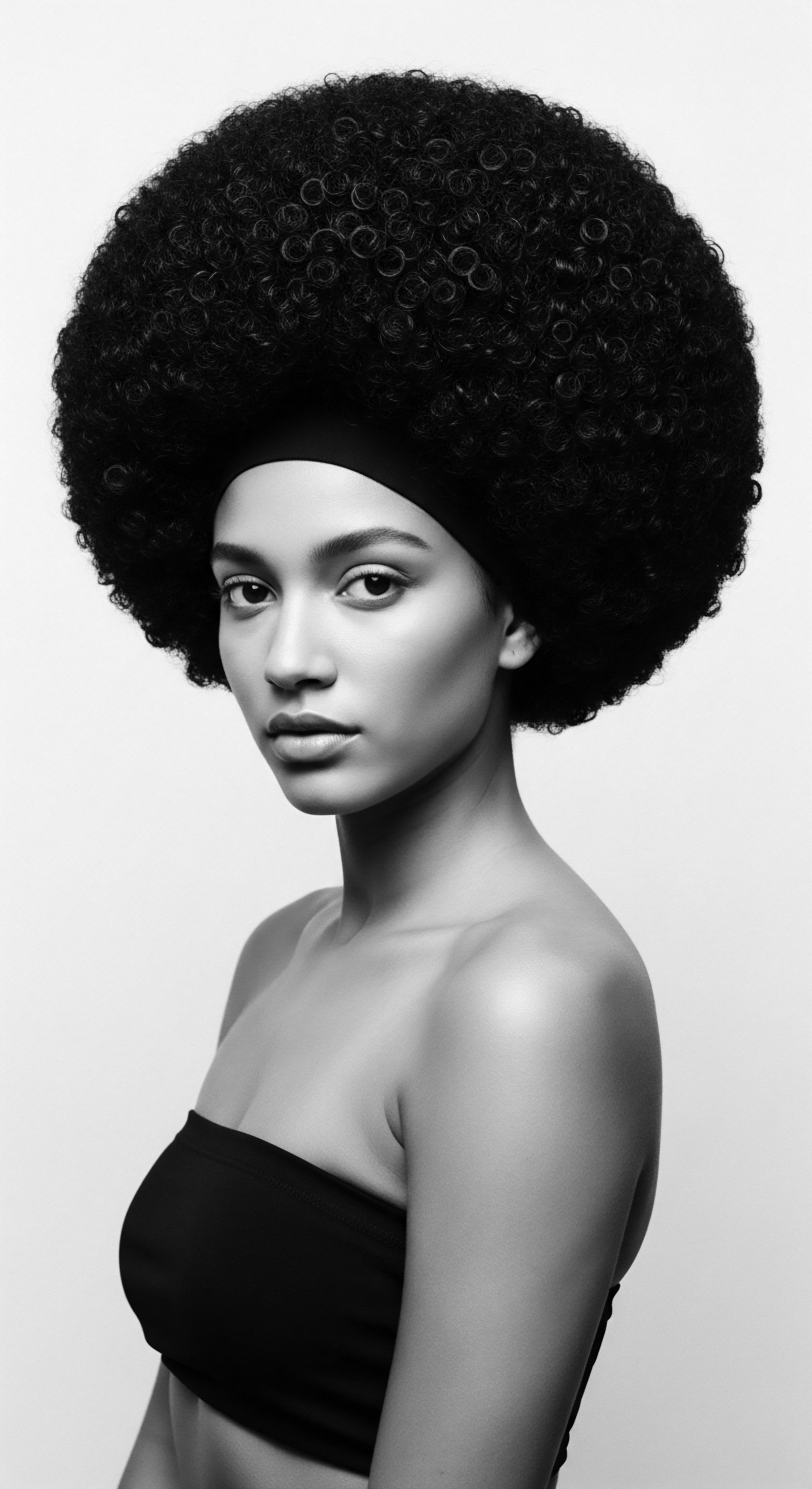
Relay
The intricate dance between ancestral wisdom and contemporary practice, between heritage and evolution, defines the continuing story of textured hair. Protective styling techniques, once confined to specific geographies and tribal customs, have relayed across continents and generations, adapting yet retaining their core essence. This transfer of knowledge, often through oral tradition, observation, and the enduring power of community, speaks to the profound adaptability and resilience of Black and mixed-race people, making hair a living testament to cultural continuity amidst vast historical shifts.

Diaspora and the Endurance of Styles
The transatlantic slave trade, a period of immense brutality and displacement, could have shattered these deeply rooted hair traditions. Yet, against all odds, ancestral hair practices not only survived but adapted, evolving into new expressions of identity and resistance. Enslaved Africans, stripped of their names, languages, and cultural markers, often found solace and silent defiance in their hair.
Braids could conceal maps to freedom, seeds for new crops, or messages understood only by those initiated into the hidden language of hair. This transformation underscores the profound significance of protective styles as not just aesthetic or health practices, but as tools of survival and vehicles for cultural transmission.
The techniques themselves, such as cornrowing and various forms of twisting, endured because of their practicality and efficacy. They were low-maintenance solutions for demanding labor conditions, minimizing daily manipulation and helping to prevent damage. Over time, these practices blended with new influences, yet the underlying principles of protection, moisture retention, and minimal manipulation remained paramount. The resilience of these styles mirrored the resilience of the people who wore them, a powerful symbolic connection.
Protective styling practices, carried across the diaspora, evolved into enduring symbols of cultural continuity and resilience, far beyond their practical application.

Decoding the Science of Protection
Modern trichology and hair science now offer explanations that validate the ancestral wisdom behind protective styling. The efficacy of these techniques can be understood through the lens of biophysics and material science. When hair is braided, twisted, or coiled into a compact form, it reduces the surface area exposed to environmental aggressors like sun, wind, and pollution. This physical barrier helps to maintain the hair’s internal moisture balance, preventing desiccation and subsequent brittleness.
Furthermore, protective styles significantly reduce Mechanical Stress on the hair shaft. Daily brushing, combing, and styling contribute to cuticle damage and breakage, particularly for textured hair, which has more points of natural fragility due to its coiled structure. By securing the hair in a low-manipulation style, these forces are minimized, allowing the hair to rest and grow undisturbed. This scientific understanding simply provides a language for what generations of caretakers intuitively understood ❉ less manipulation, more preservation.
The practice of applying oils and butters before or during the installation of a protective style further underscores this scientific alignment. These emollients provide a hydrophobic layer that helps to seal the hair’s cuticle, preventing moisture loss and providing lubricity that reduces friction between strands. This concept aligns perfectly with modern hair care principles emphasizing hydration and sealing for textured hair health.
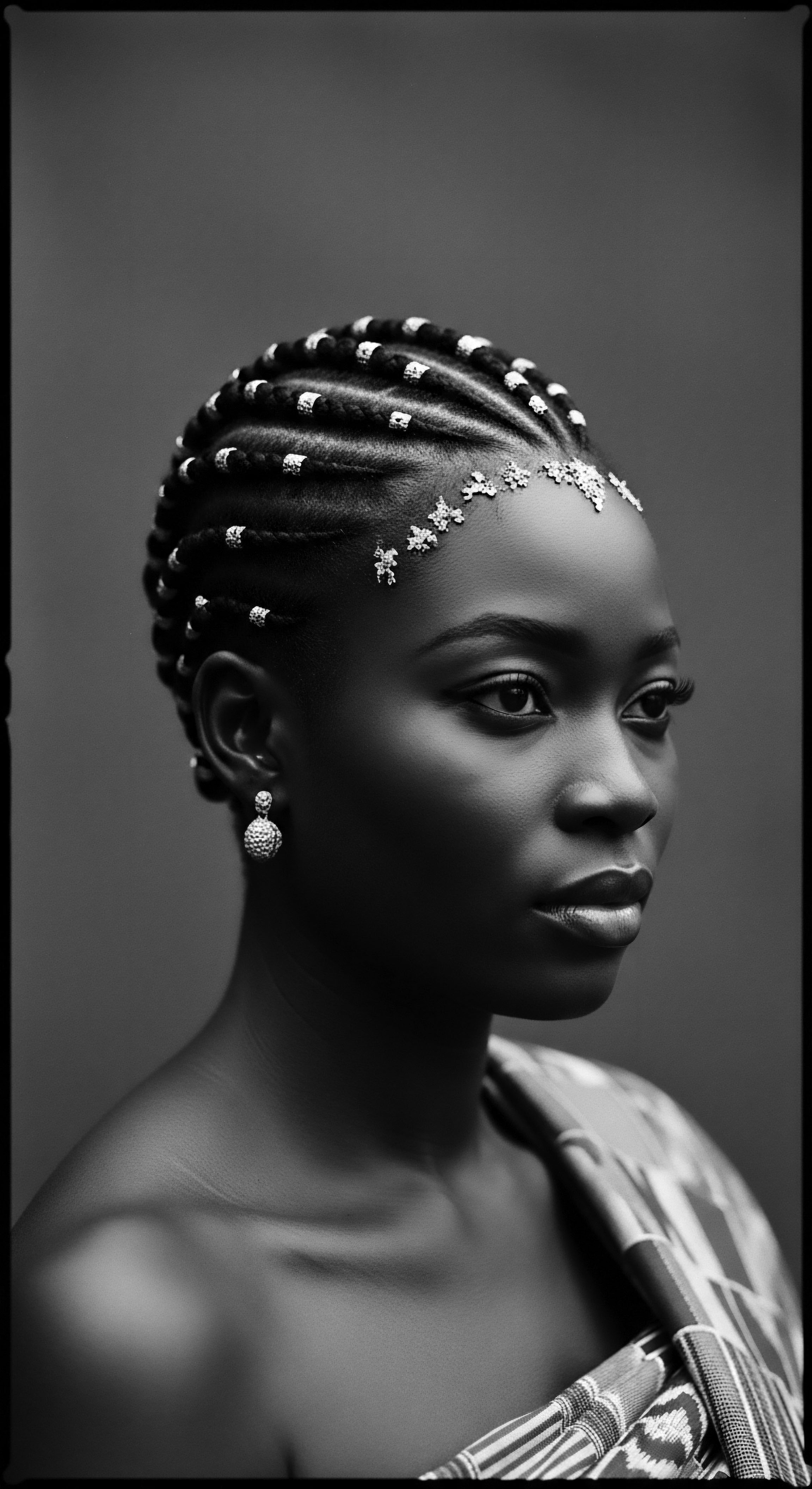
Bridging the Eras ❉ Traditional Tools and Contemporary Innovation
The tools of protective styling have also evolved, yet often echo their ancestral counterparts. Simple combs carved from wood or bone, often with wider teeth, were used to gently detangle and prepare hair. These tools recognized the delicacy of textured strands, prioritizing careful separation over aggressive raking. Similarly, the hands themselves, skilled in intricate patterns, were the primary instruments, underscoring the artisanal nature of these practices.
Today, while we have access to a plethora of detangling brushes and specialized styling tools, the fundamental principles remain. The wide-toothed comb remains a staple for textured hair. Modern hair extensions and synthetic braiding hair, though distinct from ancestral adornments, serve to add length and volume while allowing natural hair to rest in protective styles. This evolution represents a relay of knowledge, where ancient principles are adapted with new materials and techniques, ensuring the continuity of the protective styling tradition.
- Bone or Wooden Combs ❉ Ancestral tools with wide, spaced teeth, designed for gentle detangling and minimal breakage on fragile, textured strands.
- Styling Fingers ❉ The original, most versatile tools, expertly manipulating hair into intricate patterns with precision and care, preserving strand integrity.
- Natural Fibers for Extension ❉ Historically, natural fibers or human hair were used to extend styles, adding length and fullness while allowing the wearer’s hair to rest, mirroring modern extensions.

What Continues to Inform Modern Protective Styling?
The ancestral knowledge base continues to heavily inform contemporary protective styling. The principles of minimum manipulation, moisture retention, and environmental protection remain paramount. Today’s stylists and hair enthusiasts often draw directly from these historical techniques, reinterpreting them for modern contexts. Styles like box braids, twists, and cornrows, though perhaps worn with different social meanings now, are direct descendants of ancient practices.
The continued emphasis on natural ingredients—like shea butter, coconut oil, and various herbal extracts—in contemporary hair products further illustrates this relay. These are not new discoveries, but a rediscovery and re-validation of indigenous knowledge systems. The modern natural hair movement, in particular, has seen a resurgence in interest in these traditional ingredients and methods, often seeking to reconnect with a heritage of holistic hair care that predates colonial influences. This reconnection is a powerful affirmation of identity, allowing individuals to honor their roots through their daily hair rituals.
Understanding the historical lineage of protective styling is not just an academic exercise; it is an act of reclamation and self-affirmation. It allows individuals with textured hair to see their hair practices not as trends, but as part of a living heritage, a continuum of care and cultural expression that has traversed time and overcome adversity. This heritage provides a deep well of knowledge for navigating modern challenges, offering timeless solutions for hair health and beauty.

Reflection
To consider the enduring impact of ancestral practices on protective styling is to stand at the confluence of time, feeling the currents of past wisdom meet the waters of contemporary understanding. It is to recognize that the Soul of a Strand is not merely a metaphor, but a tangible lineage—a vibrant, pulsating archive residing within each coil and kink. These practices, born from necessity, culture, and deep reverence for the human form, represent more than just hair maintenance; they embody a persistent spirit of adaptation, a profound connection to the earth’s bounty, and an unwavering commitment to identity. The protective styles worn today, whether classic braids or nuanced twists, carry the echoes of hands that styled under ancient skies, of communities that gathered for hours, affirming bonds and transmitting stories.
This knowledge, passed down through generations, often silently, often through touch and shared experience, continues to guide our relationship with textured hair, shaping not just how we care for it, but how we see ourselves within the grand narrative of our collective heritage. The wisdom held within these traditions reminds us that true beauty blossoms from a place of care, respect, and deep ancestral connection.

References
- Namwandi, C. K. G. L. (2011). The Himba of Namibia ❉ Their Culture, Customs and Hair. Gamsberg Macmillan.
- Byrd, A. D. & Tharps, L. L. (2014). Hair Story ❉ Untangling the Roots of Black Hair in America. St. Martin’s Press.
- Adele, A. (2018). African Hair ❉ Its History, Culture, and Beauty. African American Cultural Center.
- Hooks, B. (1995). Art, Bell Hooks ❉ Black Looks, Race and Representation. South End Press.
- Mercer, K. (1994). Welcome to the Jungle ❉ New Positions in Black Cultural Studies. Routledge.
- Akbari, R. & Mirnezami, M. (2019). The Role of Hair Care in Ancient Civilizations. International Journal of Dermatology and Cosmetology, 2(1), 1-5.
- Sobo, J. K. (2019). Textured Hair Morphology and Grooming Challenges. Journal of Cosmetology & Trichology, 5(2), 1-6.
